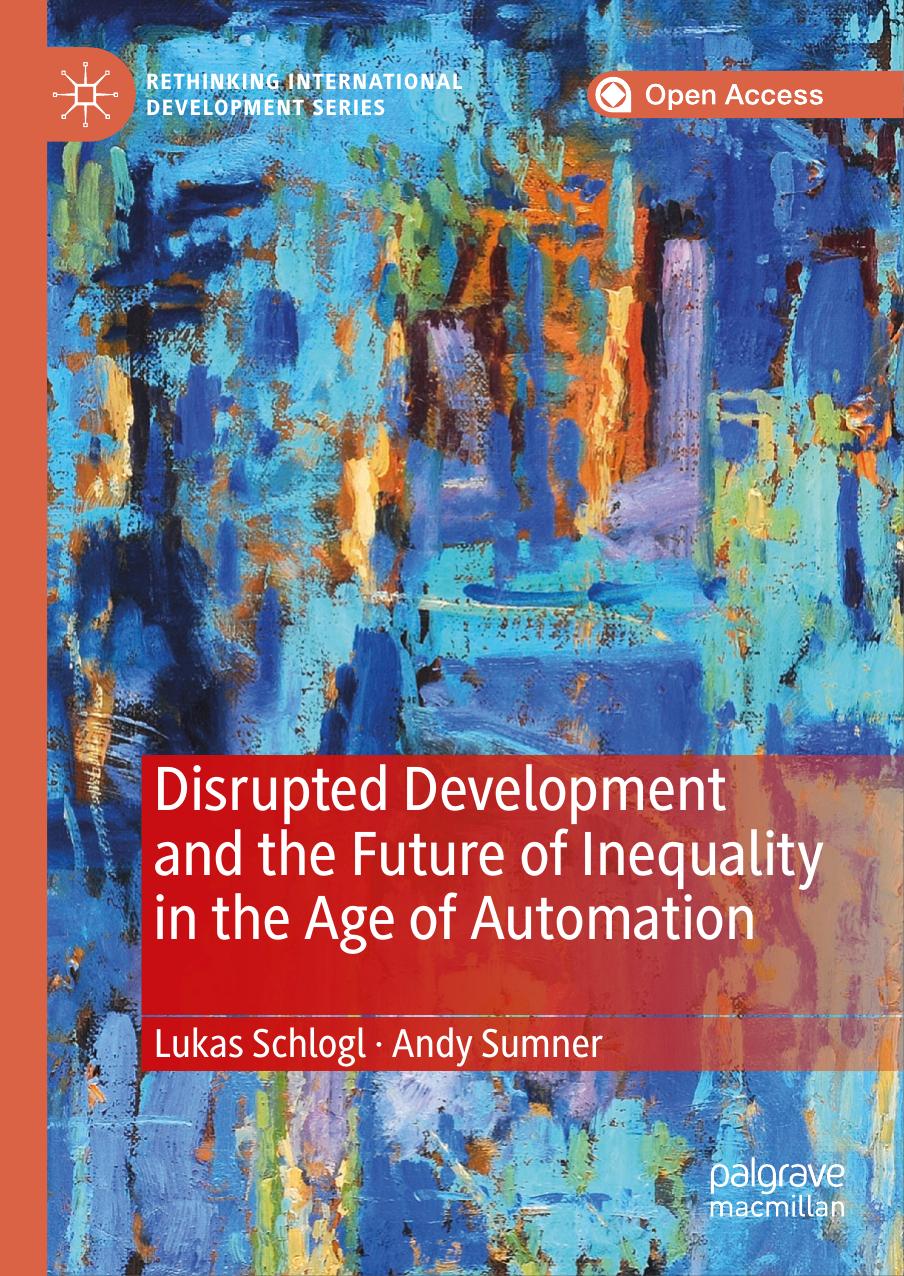Disrupted Development and the Future of Inequality in the Age of Automation by Lukas Schlogl & Andy Sumner

Author:Lukas Schlogl & Andy Sumner
Language: eng
Format: epub, pdf
ISBN: 9783030301316
Publisher: Springer International Publishing
In line with the argument of a distribution dilemma , Roine and Waldenström (2014, p. 79)—though they are skeptical of any “mechanical relationship between inequality and industrialization or technological change ”—argue that: “the technological development starting in the 1970s constitute[s] the start of a shift, not from agriculture to industry as in Kuznets ’ original story, but from traditional industry to an ICT-intensive sector that initially rewards a small part of the population, but eventually will spread, bringing inequality down.”1
There is thus a theoretical case that automation may be linked to income inequality and wage stagnation. Is there also a case for it leading to technological unemployment ? The Solow model and its iterations suggest greater output (i.e. supply) due to automation which should translate into lower prices under conditions of competition. Lower prices in turn should lead to greater quantities demanded which necessitate more net employment of humans.
So, the net effect of using labor-saving technology could still be labor-increasing domestically. It may, however, not be if we took the Summers’ model to its extreme: this would mean assuming a perfectly labor-saving production function where labor drops out entirely as a factor of production. In that case, output would be produced solely by nonhuman production factors.
Solow himself was skeptical of such a scenario. In a book on unemployment in the United States written in the 1960s, he noted that “rather spectacular scientific and engineering achievements” have led many “to the conclusion that there is a kind of revolution in progress, connected with the advance of automation” (Solow , 1964, p. 7). Yet, he doubted “that the clichés about automation and structural unemployment are very productive in analyzing the problem or bringing the remedy any closer” (ibid., p. 40) and he was particularly skeptical that automation calls for specific policy responses or a reorganization of the economic framework.
Of course, as noted above, not all labor is equally easy to substitute with machines. The dominant view has been that technology is skills-complementing or skills-biased (see Tinbergen , 1974, 1975). Empirically, models predicting a “skills premium” and rising market inequality due to automation are pervasive (see Acemoglu & Autor , 2011; Autor, Katz, & Kearney, 2004; Goldin & Katz, 2007; Katz & Autor, 1999; Katz & Murphy, 2013). Others have argued, though, that technological change does not necessarily have to be skills-biased and inequality-increasing in every case (see Roine & Waldenström, 2014).
The neoclassical growth model is a one-sector model and thus indifferent to the role of structural change in driving growth as Lewis (1954) intended, in his vision of economic development as a transfer of labor from a low-productivity, “traditional ” sector to a higher productivity, “modern” sector. Herrendorf, Rogerson, and Valentinyi (2014) argue empirically that the sectoral composition of economic activity is key to understanding economic development . McMillan and Rodrik (2011, p. 1), also, in taking sectoral and aggregate labor productivity data empirically show that the transfer of labor and other inputs to higher productive activity is a driver of economic development , as Lewis hypothesized.
Download
Disrupted Development and the Future of Inequality in the Age of Automation by Lukas Schlogl & Andy Sumner.pdf
This site does not store any files on its server. We only index and link to content provided by other sites. Please contact the content providers to delete copyright contents if any and email us, we'll remove relevant links or contents immediately.
International Integration of the Brazilian Economy by Elias C. Grivoyannis(90711)
The Radium Girls by Kate Moore(11921)
Turbulence by E. J. Noyes(7935)
Nudge - Improving Decisions about Health, Wealth, and Happiness by Thaler Sunstein(7615)
The Black Swan by Nassim Nicholas Taleb(7010)
Rich Dad Poor Dad by Robert T. Kiyosaki(6399)
Pioneering Portfolio Management by David F. Swensen(6226)
Man-made Catastrophes and Risk Information Concealment by Dmitry Chernov & Didier Sornette(5921)
Zero to One by Peter Thiel(5684)
Secrecy World by Jake Bernstein(4642)
Millionaire: The Philanderer, Gambler, and Duelist Who Invented Modern Finance by Janet Gleeson(4374)
The Age of Surveillance Capitalism by Shoshana Zuboff(4209)
Skin in the Game by Nassim Nicholas Taleb(4161)
Bullshit Jobs by David Graeber(4094)
The Money Culture by Michael Lewis(4074)
Skin in the Game: Hidden Asymmetries in Daily Life by Nassim Nicholas Taleb(3929)
The Dhandho Investor by Mohnish Pabrai(3698)
The Wisdom of Finance by Mihir Desai(3650)
Blockchain Basics by Daniel Drescher(3495)
